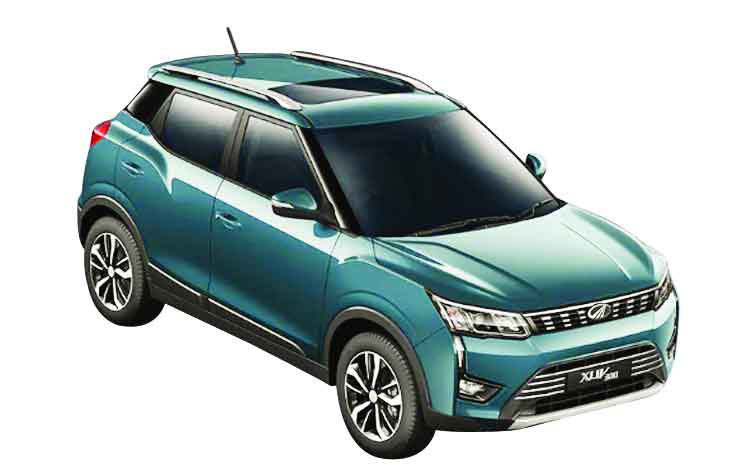The Mahindra XUV300 ticks all the boxes and if the price gets right, this could change the market
Back in 2006, me and a couple of friends had gone on a road trip from Mumbai down to the Kerala beachside town of Alappuzha. This was a drive that I will always remember, not least for the car that I drove, which was a Mahindra Scorpio. A month or so before we had set off on the drive, Anand Mahindra had taken me and a few more journalists to the Igatpuri plant where the Scorpio is put together. This is when the company had just launched the first facelift of that car, the one with the tall tail-lights, if you remember. Mr Mahindra in a moment of jest had told me that I could take the car for a month and go on a long drive. I’m not sure he had told his communications team the same thing, but after I had shot off my mouth about this one drunken evening at a friend’s house, my friends who were a bit less drunk from what I can remember, forced me to keep my end of the deal. And I forced the Mahindra communications team to hand me a Scorpio for a month.
That was not the first time I had driven the Scorpio since it had been launched back in 2002. But those of you who have driven early-build Mahindra Scorpios would remember that they were not what you would call refined or particularly great to drive. For one, the Scorpio’s back in the day were decidedly uncomfortable at very high speed, handling around corners was dubious and the vehicle ‘submarined’ under heavy braking. Submarining in an automotive context is when the car literally ‘dives’ when you brake hard. All cars lurch forward but early Scorpios were, well, uncomfortable.
The reason I’m on about this drive almost 13 years ago is because recently I found myself on the same stretch of road as I drove back then, National Highway 17 now numbered National Highway 66. Our desi version of America’s iconic Route 66 is the coastal highway from Mumbai all the way till Cochin, straddling India’s Konkan and Malabar coasts. And like that time I found myself in a Mahindra vehicle, this time I was in the upcoming XUV300. While the road might have been somewhat the same, particularly inside Goa where it is still a twisty single-carriageway through the hills, it is also different because when you cross into Karnataka you find yourself on a stunning new four-lane expressway. Unhurried by the demands of television, I decided to drive from my hotel in Goa to the beautiful Uttara Kannad beach town of Karwar and the fabulous Rabindranath Tagore beach, maybe to satisfy my inner Bengali nature. I debated going down to the stunning Om Beach in Gokarna but lunch at Martin’s in Goa sounded more tempting than adding a couple of hours to the drive and I still got a good 300 kilometers with the vehicle.
Where do I start about the XUV300 and how it drives? Well, first things first, this vehicle might wear a Mahindra badge but it is miles ahead of anything else that Mahindra has made in India. The twisty sections through the ghats in Goa are a great test of a vehicle’s handling and the XUV300 was not just adept, but for a vehicle that describes itself as a sub-compact Sports Utility, as it is below four metres in length, it was extremely good. Sure, there was a bit of understeer when you went into a corner a bit harder than you should have, but it was never disconcerting and never did I feel to brake hard before the corner to take it at a milder speed. Goa’s twisty roads are dangerous, because while driving through I saw two accidents of small cars that had toppled over, one mere minutes before I drove through.
Can the XUV300 go fast? Yeah it can and the 1.5-litre diesel, the same unit as on the Marazzo, delivers 115 horsepower. Like on the Marazzo, the engine is tuned perfectly to always have power and despite the six-speed gearbox (I’m not a fan of six-speed manuals on any car in India) I never felt the need to mash the gears like I’m hand-churning mayonnaise just to get power into and out of corners. Drop down a single cog and you get enough power to overtake trucks. Frankly, compared to the two vehicles that this is going to compete against, the Vitara Brezza and the Ford Ecosport, on the diesel front at least it handles and drives better. There will also be a 1.2-litre petrol engine option with 110 horsepower, which I will hopefully drive before the end of the month in Delhi and I’ll certainly write about that.
The top-specified XUV300 comes with a heads-up display, which is not only first in class, it is the first in a non-luxury car. That actually kept my eyes on the road all the time and did keep my speed in check. And that is not the only technology in the car, it comes with a lot of tech, some of it seemingly silly, and to be honest I did not have the time to go through all of it on this first drive, such as the Ecosense display and smartphone application. I did what I always do which is to plug in my iPhone and put on CarPlay, which is a plug and play job, and the XUV300 also has support for Android Auto. With both systems coming with support for Google Maps, I found making my way to Karwar, which at times involved the narrow village lanes of Goa, a piece of cake. That said, this vehicle also has pre-loaded maps and all sorts of other gimmicks to keep any techno-geek happy.
There is, however, the steering control, which allows you to adjust the weight of the steering between comfort, normal and sport and while this is a basic resistance sort of switch, I personally like my steering a bit heavier and kept the XUV300 on Sport throughout. I can understand why one would want to put the car on Comfort steering mode in lawless Noida traffic, but on the highway and at speed, I’m not so sure I would want such a light feel to my steering.
Negatives? Well, the rear-overhang is non-existent and that makes the car look a bit awkward. This is a function of the fact that the XUV300 is a moderately re-engineered version of the Ssangyong Tivoli made to comply with India’s bizarre sub-four metre rules when it comes to taxes on cars. The Tivoli, which is almost 20 centimetres longer, has been shortened to comply. The other is the fact that the car’s waistline balloons out over the back wheels, making it quite wide. While this helps in making the rear track, that is the distance between the wheels wider than the front and also wider than the competition, the XUV300 has a fat ass. And the loading lip for luggage is quite high, but then it does come with a full-size spare wheel and also has some underfloor storage.
I hope Mahindra is able to price this car smartly, because if they do they can really put a cat among the pigeons in this segment. I would even say that this car is better than some other vehicles in the Compact SUV segment. A problem that the company will face is that of image. Would you buy such an urbane and sophisticated car from the same showroom as a Bolero? For the XUV300 to achieve its full potential, and I strongly believe it has a lot of sales potential, the company will need to go after buyers who have never before considered buying a Mahindra. They will need to change the way they sell cars because there are two aspects to making a product successful, the first is making a good product and the second is making people want to buy it. In the XUV300, Mahindra has got the first part right. I hope they get the second right because I do want to repeat my old road trip once again in this.


























